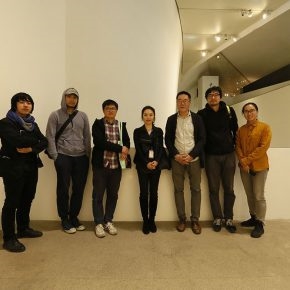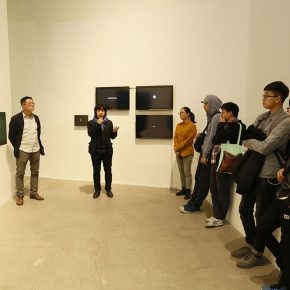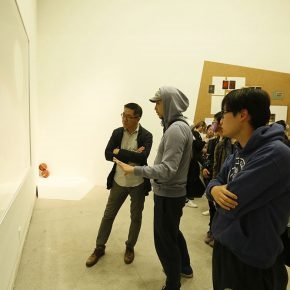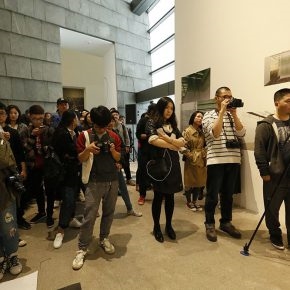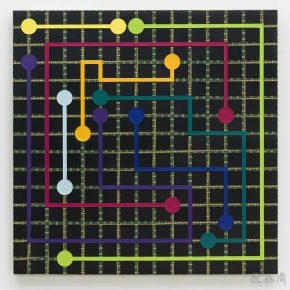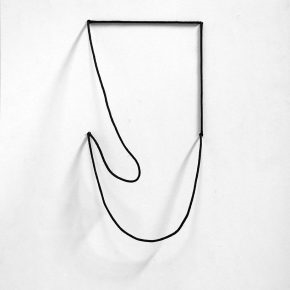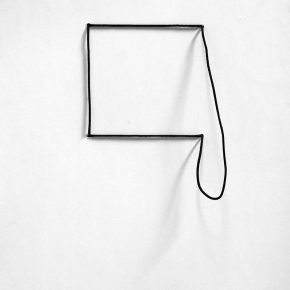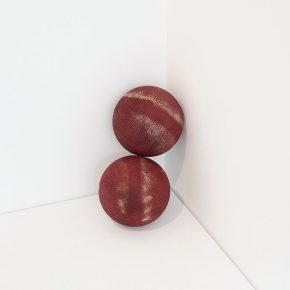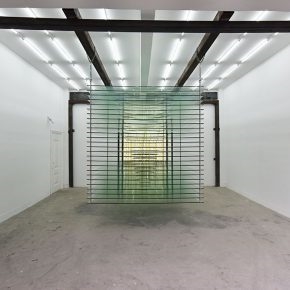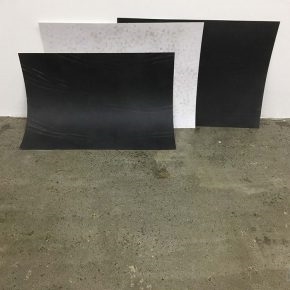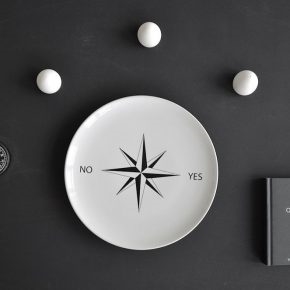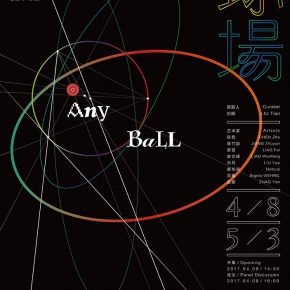
Starting from an almost identical initial state, they have never been repeated although there are many ball games — or, they are repeated in an instant that we are not aware of.
This is the story of the people’s stadium, but it’s foundation is based on simple physical phenomenon and mathematical principles: straight-line motion, elastic collision, momentum conservation, rigid body, potential energy, applied force, acceleration, the normal, extension line. In a finite boundary, calculating, predicting, controlling, reacting, differentiating, extending, penalizing, and forever seeking accuracy, never able to get rid of the factor of contingency.
The abstract mass point doesn't exist, but it can be imagined. The quantum “adherence” which makes up the corporeal body is an unfathomable probability of sadhana, it can only be spoken of, yet remains unobservable. When the synapse of the neuron which received information took place is unknown, conducting and directing you to leave ineffable traces. Humanity vibrates like pollen and drifts, and our fetishes form various angles works with the vector of fate.
Thus, the props of the match cast an elongated shadow, where the sea becomes a drip stadium, the boundary of the ripple elapses, while the restless turmoil and havoc endure in the threading of the needle. Dusk is thus the greeting and farewell of two celestial bodies, who themselves are but a few stones on a children’s game board. From the chaotic jumble of the urban-rural fringes, to the financial district where lump sums of wealth reside in towering skyscrapers, the sun which one sees upon raising one’s head is still the same sun. Why not place the fate of the entire race inside a chicken egg?
Leaving the basic conformity of mathematical models and the rules of the game, then exit from the abstract vanishing point and extrude the kaleidoscopic creatures, where a more complex spiritual and phenomenological realm is unfolded: Humanity is a slow but blazing oxide, and the blend of accuracy and contingency is where the mystery of the world lies, inseparable and “sondern dass sie ist” (but that it exists).
It has always been an open competition.
Text and photo by the organizer, translated by Chen Peihua and edited by Sue/CAFA ART INFO
About the Exhibition
Title: Any Ball
Venue: Gallery 3C, CAFA Art Museum
Duration: April 8 – May 3, 2017
Curator: Liu Tian
Artists: Bignia Wehril, Chen Zhe, Jiang Zhuyun, Liao Fei, Liao Wenfeng, Liu Yue, Nabuqi, Zhao Yao
About the Curator
Liu Tian, a Doctor of the Institute of Contemporary Art and Social Thoughts of the SIMA, China Academy of Art,with a long period of dedication to the advancement of research and creation, and his work runs through the curating, creation of works, theoretical research and writing. Since 2006, he has been a curator that participates in the planning of a number of academic exhibitions.
About the Artists
Born in 1989, Chen Zhe works and lives in Beijing. Chen graduated from the School of Design at Los Angeles Center for Art, with a BA in Photography and Image in 2011.
Born in Hangzhou in 1984, Jiang Zhuyun lives and works in Hangzhou. Jiang is an artist, programmer, musician, he once studied at the China Academy of Art. Jiang’s creative media covers various forms, involved in the installation, creativecode, internet art, sound art, experimental music, audio visual and so on.
Born in Jiangxi in 1981, Liao Fei graduated from Shanghai Normal University in 2006. Liao is currently working in Shanghai. Liao Fei’s work starts from the surrounding things and has his own doubts, trying, through his own work to be close to “things”. On the one hand, Liao Fei has a strong suspicion for the binary, and on the other hand, Liao is heavily interested in the beauty created on the basis of the binary. It has prompted him to start from taking “material” as a clue to carry on creative practices from 2011. It gradually extends the scope of his work to the scale established on the basis of binary, as well as the system itself.
Liao Wenfeng was born in Jiangxi Province, China in 1984. He graduated from the Total Art Studio of the China Academy of Art in 2006, and moved to Berlin, Germany in 2012, graduated with a Masters degree program in “Art in Context” from the Berlin University of the Arts in 2016. His creation integrates video, GIF animation, photography and painting, as well as painting, focusing on the visual game space between constructs, bodies and ideas in everyday contexts.
Born in 1981, Liu Yue graduated from the Oil Painting Department of the College of Fine Arts, Shanghai University, and now works and lives in Shanghai. Liu has held solo exhibitions and participated in several group exhibitions.
Nabuqi’s sculpture embodies the thought of the ontology of “object”: the objects around us independently live outside people’s perception. She graduated from the CAFA in 2013, and has held solo exhibitions and participated in group exhibitions in Beijing and New York. Recent exhibitions include the Shanghai Biennale 2016 and the Gwangju Biennale. Naboqi was born in Inner Mongolia in 1984 and now lives in Beijing.
Bignia Wehrli was born in 1979 in Uster, Switzerland, as an artist currently working in Berlin. After receiving a Masters degree diploma from the Hochschule für Bildende Künste Dresden, she was supported by the DAAD’s scholarship for further study at the Total Art Studio and the Department of Calligraphy in the China Academy of Art. Bignia’s artistic practice emphasizes the visual process of the perishable traces and the different ways of capturing. She invents different marking methods and instruments for the recording of fleeting events and performances, placing them in new contexts and relationships.
Born in Sichuan, China in 1981, Zhao Yao graduated from the Department of Design Art, Sichuan Fine Arts Institute in 2004, and now lives and works in Beijing. Since 2005, Zhao has been widely concerned with contemporary Chinese art.


